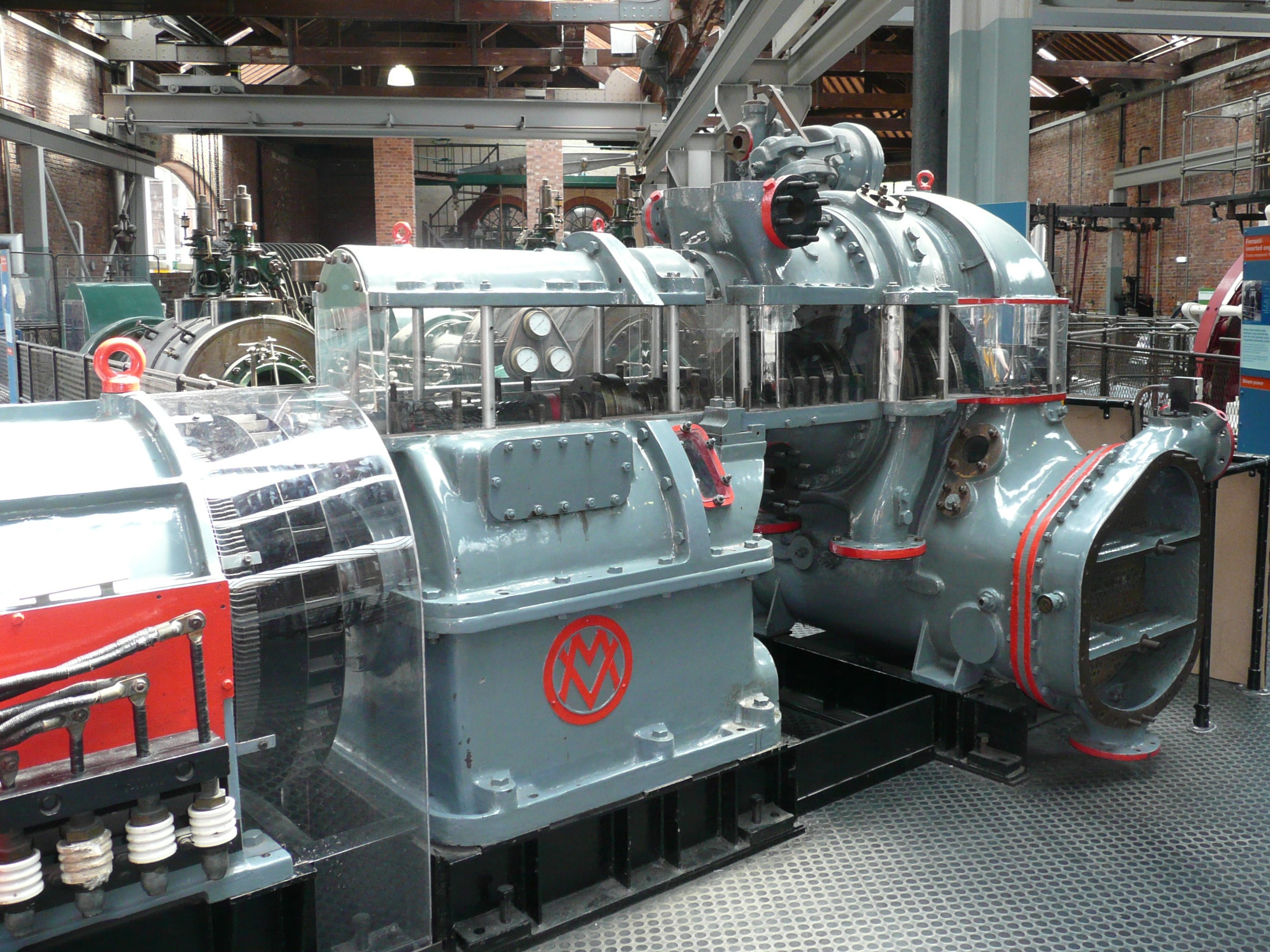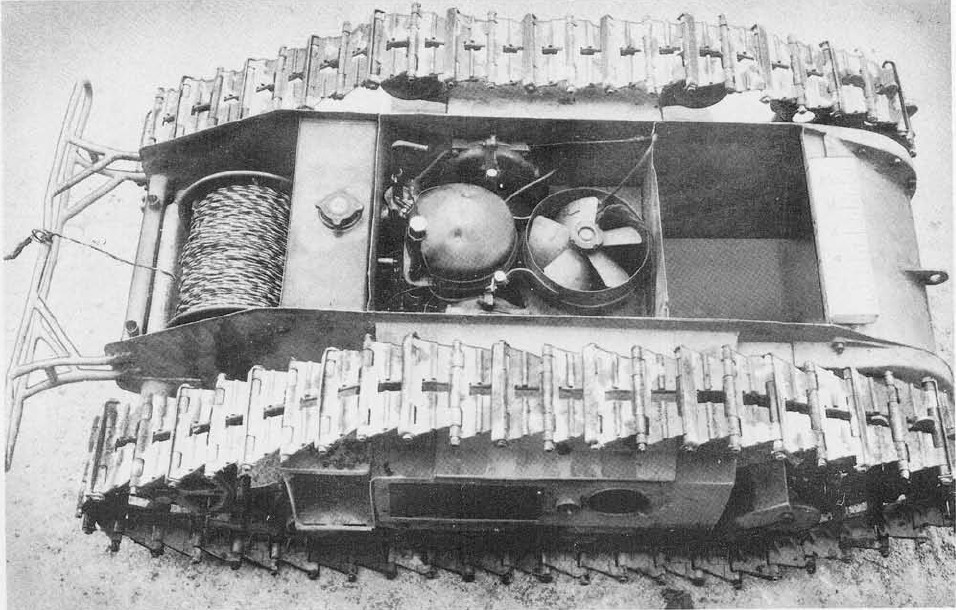|
Mobile Land Mine
The Mobile Land Mine (originally named "Beetle") was an experimental British World War II remote-controlled tracked explosive device. It was wire guided and powered by two electric motors.Foss, McKenzie, pp.130–131 The Mobile Land Mine was designed by Metropolitan-Vickers in 1940. After a successful demonstration in August 1941 an order for 50 was placed so that trials could be carried out.Everett p476-477 In 1942 Commander-in-Chief, Home Forces Commander-in-Chief, Home Forces was a senior officer in the British Army during the First and Second World Wars. The role of the appointment was firstly to oversee the training and equipment of formations in preparation for their deployment ove ... reported that it was not recommended as there was no requirement for it. It was underpowered, slow, the motors overheated and it couldn't cross typical battlefield terrain - it was finally rejected by the General Staff in 1944. Among other trials a Mobile Land Mine was waterproofed and ... [...More Info...] [...Related Items...] OR: [Wikipedia] [Google] [Baidu] |
Metropolitan-Vickers
Metropolitan-Vickers, Metrovick, or Metrovicks, was a British heavy electrical engineering company of the early-to-mid 20th century formerly known as British Westinghouse. Highly diversified, it was particularly well known for its industrial electrical equipment such as generators, steam turbines, switchgear, transformers, electronics and railway traction equipment. Metrovick holds a place in history as the builders of the first commercial transistor computer, the Metrovick 950, and the first British axial-flow jet engine, the Metropolitan-Vickers F.2. Its factory in Trafford Park, Manchester, was for most of the 20th century one of the biggest and most important heavy engineering facilities in Britain and the world. History Metrovick started as a way to separate the existing British Westinghouse Electrical and Manufacturing Company factories from United States control, which had proven to be a hindrance to gaining government contracts during the First World War. In 1917 ... [...More Info...] [...Related Items...] OR: [Wikipedia] [Google] [Baidu] |
Commander-in-Chief, Home Forces
Commander-in-Chief, Home Forces was a senior officer in the British Army during the First and Second World Wars. The role of the appointment was firstly to oversee the training and equipment of formations in preparation for their deployment overseas, and secondly, to command the forces required to defend the United Kingdom against an enemy incursion or invasion. The First World War The post was created for Field Marshal John French, 1st Earl of Ypres in December 1915, after his enforced resignation as the Commander-in-Chief of the British Expeditionary Force in the aftermath of the Battle of Loos. Bitterly disappointed, Lord French regarded the appointment as a demotion. Despite this, he energetically restructured the system of military training, drew up plans to defend the country against a German invasion and devised the first British air defence system, so that incoming Zeppelins and bombers could be tracked and countered by fighters and anti-aircraft artillery. Commanders ... [...More Info...] [...Related Items...] OR: [Wikipedia] [Google] [Baidu] |
Imperial General Staff
The Chief of the General Staff (CGS) has been the title of the professional head of the British Army since 1964. The CGS is a member of both the Chiefs of Staff Committee and the Army Board. Prior to 1964, the title was Chief of the Imperial General Staff (CIGS). Since 1959, the post has been immediately subordinate to the Chief of the Defence Staff, the post held by the professional head of the British Armed Forces. The current Chief of the General Staff is General Sir Patrick Sanders, who succeeded his predecessor, General Sir Mark Carleton-Smith, in June 2022. Background The title was also used for five years between the demise of the Commander-in-Chief of the Forces in 1904 and the introduction of Chief of the Imperial General Staff in 1909. The post was then held by General Sir Neville Lyttelton and, briefly, by Field Marshal Sir William Nicholson. Throughout the existence of the post the Chief of the General Staff has been the First Military Member of the Army Boar ... [...More Info...] [...Related Items...] OR: [Wikipedia] [Google] [Baidu] |
Landing Craft
Landing craft are small and medium seagoing watercraft, such as boats and barges, used to convey a landing force (infantry and vehicles) from the sea to the shore during an amphibious assault. The term excludes landing ships, which are larger. Production of landing craft peaked during World War II, with a significant number of different designs produced in large quantities by the United Kingdom and United States. Because of the need to run up onto a suitable beach, World War II landing craft were flat-bottomed, and many designs had a flat front, often with a lowerable ramp, rather than a normal bow. This made them difficult to control and very uncomfortable in rough seas. The control point (too rudimentary to call a bridge on LCA and similar craft) was normally at the extreme rear of the vessel, as were the engines. In all cases, they were known by an abbreviation derived from the official name rather than by the full title. History In the days of sail, the ship's boats were us ... [...More Info...] [...Related Items...] OR: [Wikipedia] [Google] [Baidu] |
Goliath Tracked Mine
The Goliath tracked mine (German: ''Leichter Ladungsträger Goliath,'' "Goliath Light Charge Carrier") was a series of two unmanned ground vehicles used by the German Army as disposable demolition vehicles during World War II. These were the electrically powered ''Sd.Kfz. 302'' and the petrol-engine powered ''Sd.Kfz. 303a'' and ''303b''. They were known as "beetle tanks" by the Allies. They carried of high explosives, depending on the model, and were intended to be used for multiple purposes, such as destroying tanks, disrupting dense infantry formations, and the demolition of buildings or bridges. Goliaths were single-use vehicles that were destroyed by the detonation of their warhead. Development During and after World War I, a number of inventors devised small, remote-controlled, tracked vehicles intended to carry an explosive charge. During the war, the French developed two vehicles. The ''Crocodile Schneider Torpille Terrestre'' () carried a explosive charge and saw lim ... [...More Info...] [...Related Items...] OR: [Wikipedia] [Google] [Baidu] |
Unmanned Ground Combat Vehicles
An uncrewed vehicle or unmanned vehicle is a vehicle without a person on board. Uncrewed vehicles can either be under telerobotic control—remote controlled or remote guided vehicles—or they can be autonomously controlled—autonomous vehicles—which are capable of sensing their environment and navigating on their own. Types There are different types of uncrewed vehicles: * Remote control vehicle (RC), such as radio-controlled cars or radio-controlled aircraft * Unmanned ground vehicle (UGV), such as the autonomous cars, or unmanned combat vehicles (UCGV) * Unmanned ground and aerial vehicle (UGAV), unmanned vehicle with hybrid locomotion methods * Unmanned aerial vehicle (UAV), unmanned aircraft commonly known as "drone" ** Unmanned combat aerial vehicle (UCAV) **Medium-altitude long-endurance unmanned aerial vehicle (MALE) ** Miniature UAV (SUAV) ** Delivery drone ** Micro air vehicle (MAV) ** Target drone * Autonomous spaceport drone ship * Uncrewed surface vehicle (USV), ... [...More Info...] [...Related Items...] OR: [Wikipedia] [Google] [Baidu] |
Robots Of The United Kingdom
"\n\n\n\n\nThe robots exclusion standard, also known as the robots exclusion protocol or simply robots.txt, is a standard used by websites to indicate to visiting web crawlers and other web robots which portions of the site they are allowed to visit.\n\nThis relies on voluntary compliance. Not all robots comply with the standard; email harvesters, spambots, malware and robots that scan for security vulnerabilities may even start with the portions of the website where they have been told to stay out.\n\nThe \"robots.txt\" file can be used in conjunction with sitemaps, another robot inclusion standard for websites.\n History\nThe standard was proposed by Martijn Koster, when working for Nexor in February 1994\n on the ''www-talk'' mailing list, the main communication channel for WWW-related activities at the time. Charles Stross claims to have provoked Koster to suggest robots.txt, after he wrote a badly-behaved web crawler that inadvertently caused a denial-of-service attack on Kos ... [...More Info...] [...Related Items...] OR: [Wikipedia] [Google] [Baidu] |
1940s Robots
Year 194 ( CXCIV) was a common year starting on Tuesday (link will display the full calendar) of the Julian calendar. At the time, it was known as the Year of the Consulship of Septimius and Septimius (or, less frequently, year 947 '' Ab urbe condita''). The denomination 194 for this year has been used since the early medieval period, when the Anno Domini calendar era became the prevalent method in Europe for naming years. Events By place Roman Empire * Emperor Septimius Severus and Decimus Clodius Septimius Albinus Caesar become Roman Consuls. * Battle of Issus: Septimius Severus marches with his army (12 legions) to Cilicia, and defeats Pescennius Niger, Roman governor of Syria. Pescennius retreats to Antioch, and is executed by Severus' troops. * Septimius Severus besieges Byzantium (194–196); the city walls suffer extensive damage. Asia * Battle of Yan Province: Warlords Cao Cao and Lü Bu fight for control over Yan Province; the battle lasts for over 1 ... [...More Info...] [...Related Items...] OR: [Wikipedia] [Google] [Baidu] |
World War II Weapons Of The United Kingdom
In its most general sense, the term "world" refers to the totality of entities, to the whole of reality or to everything that is. The nature of the world has been conceptualized differently in different fields. Some conceptions see the world as unique while others talk of a "plurality of worlds". Some treat the world as #Monism and pluralism, one simple object while others analyze the world as a complex made up of many parts. In ''#Scientific cosmology, scientific cosmology'' the world or universe is commonly defined as "[t]he totality of all space and time; all that is, has been, and will be". ''#Theories of modality, Theories of modality'', on the other hand, talk of possible worlds as complete and consistent ways how things could have been. ''#Phenomenology, Phenomenology'', starting from the horizon of co-given objects present in the periphery of every experience, defines the world as the biggest horizon or the "horizon of all horizons". In ''#Philosophy of mind, philosop ... [...More Info...] [...Related Items...] OR: [Wikipedia] [Google] [Baidu] |



